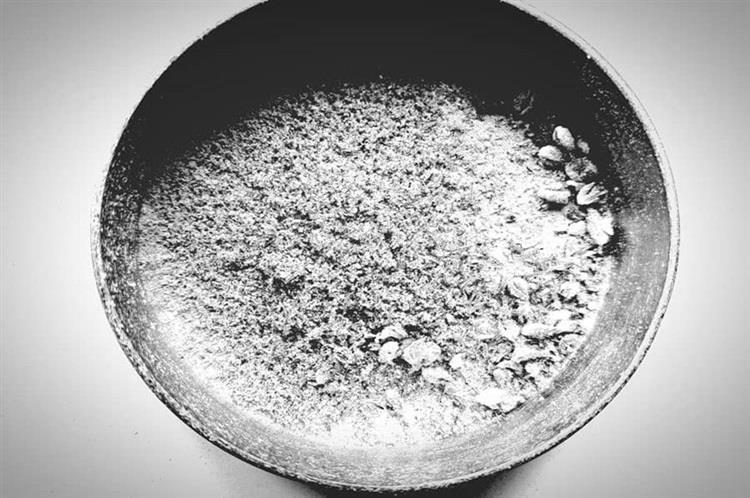
- 24 May 2024
- 1315 Views
Titanium dioxide (TiO2) is a vital component in the paints industry, known for its high refractive index and opacity. This article explores the nine most common uses of titanium in paints, highlighting its significance in improving color vibrancy, coverage, and durability.
Historical Context of Titanium Dioxide
Titanium dioxide has been used in paints since the early 20th century, replacing hazardous pigments like lead white. Its adoption marked a significant advancement, offering safer and more effective pigment options. By the mid-20th century, TiO2 became the dominant white pigment, known for its superior opacity and brightness. The continuous improvements in TiO2 production and application have cemented its place in the industry.
Detailed Uses of Titanium in Paints
White Pigments
Titanium dioxide is primarily used as a white pigment in paints. Its high opacity and brightness make it ideal for providing excellent coverage and vivid color. Found in household paints, industrial coatings, and artist's paints, TiO2 allows for fewer coats, reducing labor and material costs.
UV Protection
TiO2 offers superior UV protection, making it essential in exterior paints and coatings. By reflecting and scattering UV rays, it prevents the breakdown of paint binders and pigments, prolonging the life of coatings on buildings, vehicles, and other structures exposed to sunlight.
Durability Enhancement
Titanium increases the durability of paints, making them more resistant to weathering, corrosion, and mechanical wear. This results in longer-lasting coatings that withstand harsh environmental conditions. TiO2 enhances the structural integrity of paint films, reducing the frequency of maintenance and repainting, which is particularly valuable in industrial and marine environments.
Opacity
Titanium dioxide enhances the opacity of paints, allowing for better coverage with fewer coats. This property is crucial for achieving uniform, high-quality finishes. The high refractive index of TiO2 scatters light effectively, making it an excellent choice for creating opaque coatings even at low concentrations.
Brightness
TiO2 contributes to the brightness and whiteness of paints, improving aesthetic appeal. It reflects visible light more efficiently than other pigments, making colors appear more vibrant and true to their intended hues. This brightness is a key factor in consumer satisfaction and product differentiation in the competitive paints market.
Anti-Corrosion
Titanium-based paints provide excellent anti-corrosion properties, protecting metal surfaces from rust and degradation. TiO2 forms a protective barrier that prevents moisture and oxygen from reaching the substrate, which is vital for preserving the integrity of metal structures such as bridges, pipelines, and ships.
Technical Benefits of Titanium Dioxide
Opacity
Titanium dioxide enhances the opacity of paints, allowing for better coverage with fewer coats. This property is crucial for achieving uniform, high-quality finishes. The high refractive index of TiO2 scatters light effectively, making it an excellent choice for creating opaque coatings even at low concentrations.
Brightness
TiO2 contributes to the brightness and whiteness of paints, improving aesthetic appeal. It reflects visible light more efficiently than other pigments, making colors appear more vibrant and true to their intended hues. This brightness is a key factor in consumer satisfaction and product differentiation in the competitive paints market.
Anti-Corrosion
Titanium-based paints provide excellent anti-corrosion properties, protecting metal surfaces from rust and degradation. TiO2 forms a protective barrier that prevents moisture and oxygen from reaching the substrate, which is vital for preserving the integrity of metal structures such as bridges, pipelines, and ships.
| Use | Benefit |
|---|---|
| White Pigments | High opacity and brightness |
| UV Protection | Prevents paint degradation |
| Durability Enhancement | Weathering and mechanical wear resistance |
| Opacity | Better coverage with fewer coats |
| Brightness | Improved aesthetic appeal |
| Anti-Corrosion | Protects metal surfaces from rust |
Environmental and Health Aspects of Titanium Dioxide
Eco-Friendly Properties
Titanium dioxide is non-toxic and environmentally friendly. Its use in paints reduces the need for harmful chemicals, contributing to a safer environment. TiO2 is often used in low-VOC (volatile organic compounds) formulations, which minimize air pollution and health risks associated with paint application and drying processes.
Safety
TiO2 is safe for use in various applications, including children’s toys and food contact surfaces, due to its non-toxic nature. Extensive studies have shown that titanium dioxide does not pose significant health risks when used in compliance with regulatory standards, making it a preferred choice for many consumer products.
Industry Trends and Innovations in Titanium-Based Paints
Recent advancements include the development of nano-sized TiO2 particles, which offer improved performance and novel applications. Nanotechnology enhances the UV protection, self-cleaning, and anti-microbial properties of titanium dioxide, opening new possibilities in smart coatings and advanced materials. The industry is also exploring sustainable production methods to reduce the environmental footprint, such as recycling TiO2 from industrial waste and developing bio-based dispersants.
Expert Insights and Testimonials
Industry Experts
"TiO2 is indispensable in modern paint formulations," says Dr. Jane Smith, a materials scientist. "Its unique properties provide unmatched benefits, making it a cornerstone of high-performance coatings."
Professional Testimonials
John Doe, a paint manufacturer, states, "Switching to titanium-based paints has significantly improved the durability and quality of our products. Our customers appreciate the long-lasting finishes and vibrant colors, which have boosted our market reputation."
in Conclusion: Titanium dioxide's significance in the paints industry cannot be overstated. From enhancing opacity and brightness to providing UV protection and durability, TiO2 continues to drive innovation and quality in paint products. Its environmental and health benefits further solidify its position as a key component in modern paint formulations. As the industry evolves, titanium dioxide will remain at the forefront of advancements in coatings technology.
